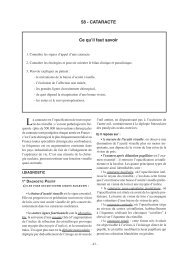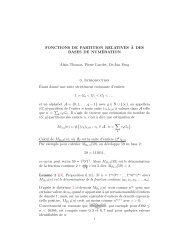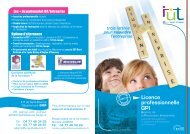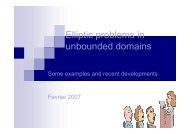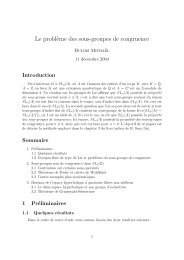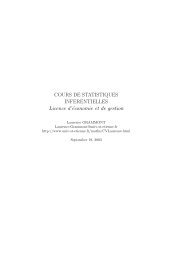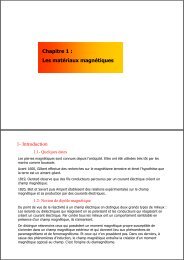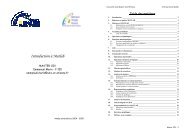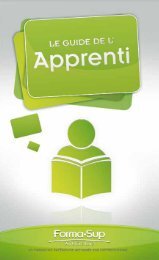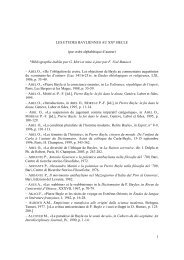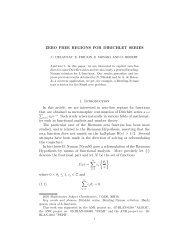COURS DE PROBABILITE 2i`eme année d'économie et de gestion ...
COURS DE PROBABILITE 2i`eme année d'économie et de gestion ...
COURS DE PROBABILITE 2i`eme année d'économie et de gestion ...
Create successful ePaper yourself
Turn your PDF publications into a flip-book with our unique Google optimized e-Paper software.
32CHAPTER 3.∫ ∫P ((X, Y ) ∈ D) =COUPLE <strong>DE</strong> VARIABLES ALÉATOIRESCONTINUES==∫ D 1(∫ 1−x∫0101dx dy)dy dx01 − x dx =[x − x22] 10= 1 2 .A partir <strong>de</strong> la fonction <strong>de</strong>nsité conjointe, peut-on r<strong>et</strong>rouver les fonctions <strong>de</strong>nsitémarginales <strong>de</strong> X <strong>et</strong> Y ?f X (x) =f Y (y) =Propriété∫ +∞∫ −∞ +∞−∞∫ +∞ ∫ +∞−∞−∞f X,Y (x, y)dyf X,Y (x, y)dxf X,Y (x, y)dx dy = 1Exemple :{ kxf(x, y) =2 + y 2 − xy x ∈ [−1, 1] <strong>et</strong> y ∈ [−1, 0]0 sinona) déterminer k pour que f soit effectivement une fonction <strong>de</strong>nsité d’un couple(X, Y ).b) calculer P [{0 < X < 1} ∩ {−1/2 < Y < 0}]c) fonctions <strong>de</strong>nsité marginales.d) fonction <strong>de</strong> répartition conjointe.




